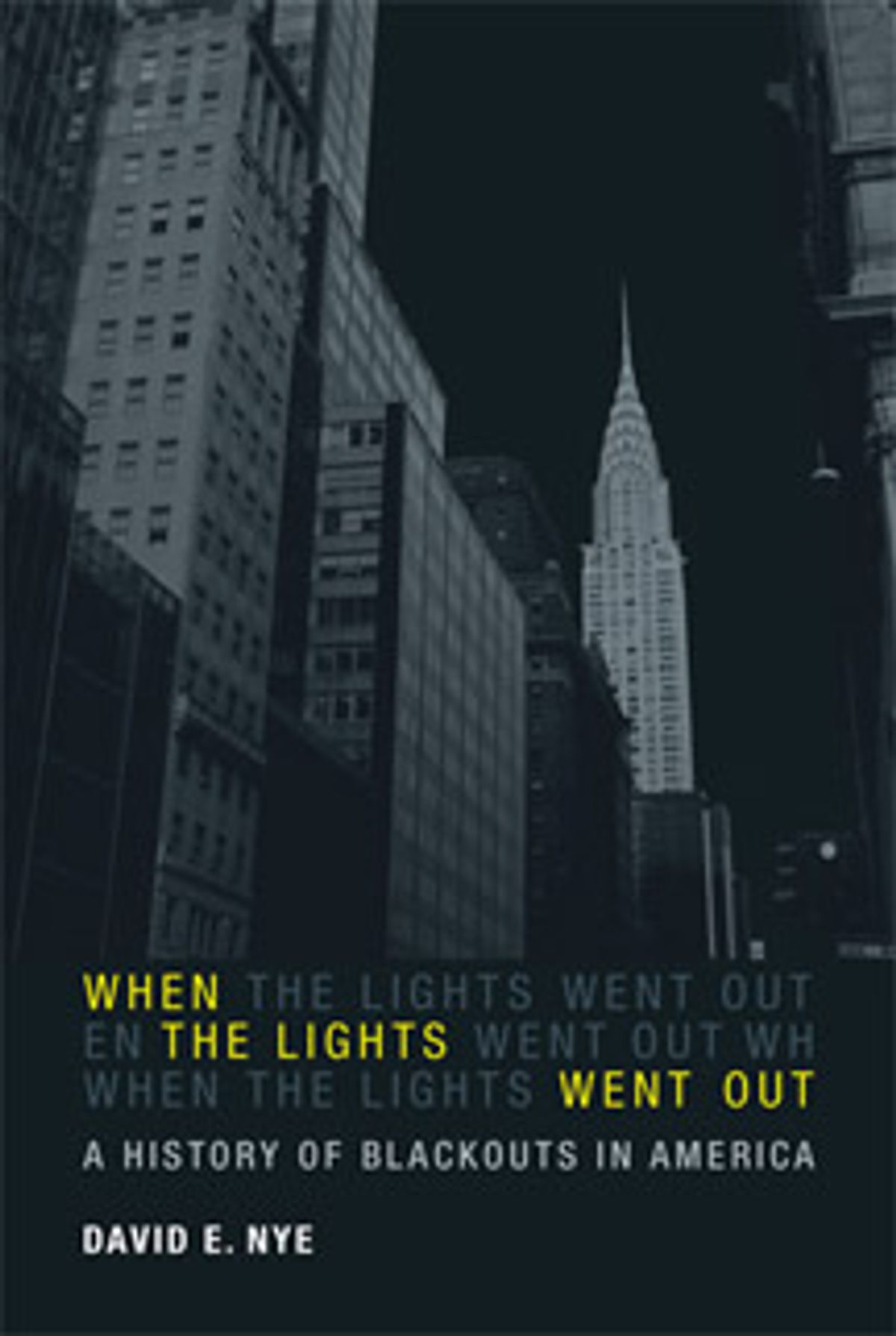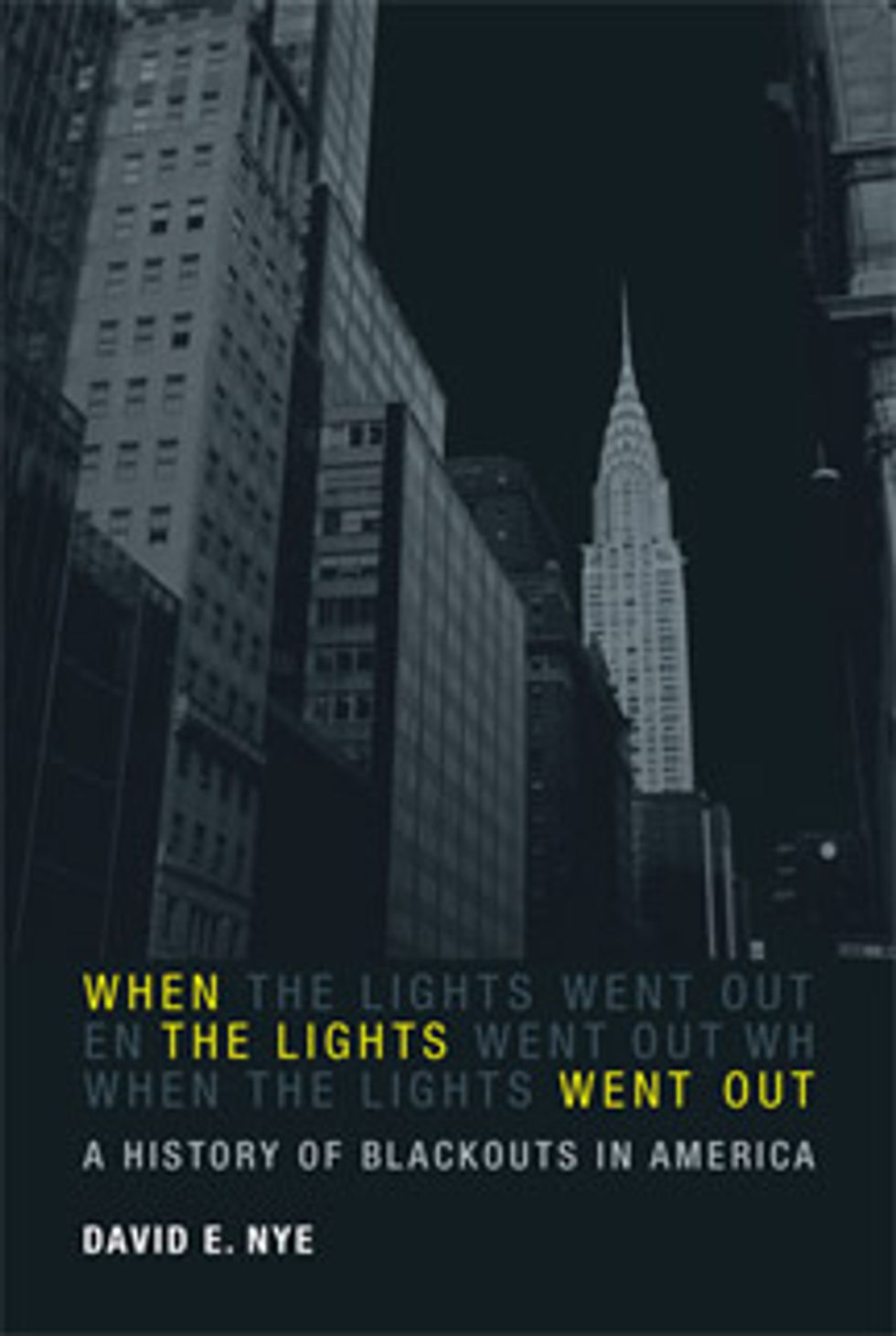By David E. Nye; MIT Press, March 2010; 304 pp.; $27.95; ISBN ISBN 978-0-262-01374-1
Inventing cars means inventing car wrecks; inventing planes means inventing plane crashes; inventing the electric grid means inventing blackouts. This is the stark logic behind a penetrating new look at power outages. Author David Nye, an expat professor of American history at the University of Southern Denmark, in Odense, has written about electricity before, notably in his award-winning 1992 book Electrifying America: Social Meanings of a New Technology, 1880–1940. In When the Lights Went Out, though, he examines those moments when a city or region is suddenly de-electrified.
In World War II, for instance, civilian populations quickly learned that dousing all lights in a city frustrated enemy bombing raids, thus saving lives. In a darkly humorous passage, Nye recounts the French sprucing up the color palette of air raid curtains (which were never used because the country surrendered to Germany so quickly) and, by contrast, the efficacy of German citizens’ black curtains.
Involuntary blackouts make up most of the material for When the Lights Went Out, and Nye is clearly in his element when contrasting the urbane calm of a 1965 New York City blackout with the riotous atmosphere of a similar 1977 outage. In 1965, a cool November full moon had illuminated a dark city, whereas in July of ’77, tempers were already flaring due to a heat wave. But, he says, a dozen years and the first OPEC oil embargo had also radically transformed American cities, and in the late ’70s New York City in particular was near financial bankruptcy and less able to respond to the tumult on the streets.
Also in 1977, Nye points out, Lockheed Electronics patented a load-shedding system that partly formed the basis of California’s rolling blackouts of the last decade. And, he says, between 1984 and 2000, a decaying and deregulated American power grid lost, on average, 4000 megawatts or more to blackouts every 18 months. By contrast, Russia—whose post-Soviet economic chaos would seem a perfect environment for grid failure—didn’t experience a single major blackout from 1975 to 2005. Deregulation, he suggests, carries a sometimes steep price.
Nye has a strong, authoritative voice, but When the Lights Went Out occasionally feels overly academic and stilted. Yes, it’s a fascinating insight that a region without electricity shows sides of itself that are otherwise invisible when the lights are on. But I lost count of the number of ways Nye gussied up this truism with such pointless jargon as a blackout’s ”unframed liminality” and the ”heterotopia” it engenders. Sometimes a squirrel gets fried in a transformer, and folks just have to break out the candles for a few hours. There’s no need to get lost in lingo. When Nye lets the history speak for itself, it does.

